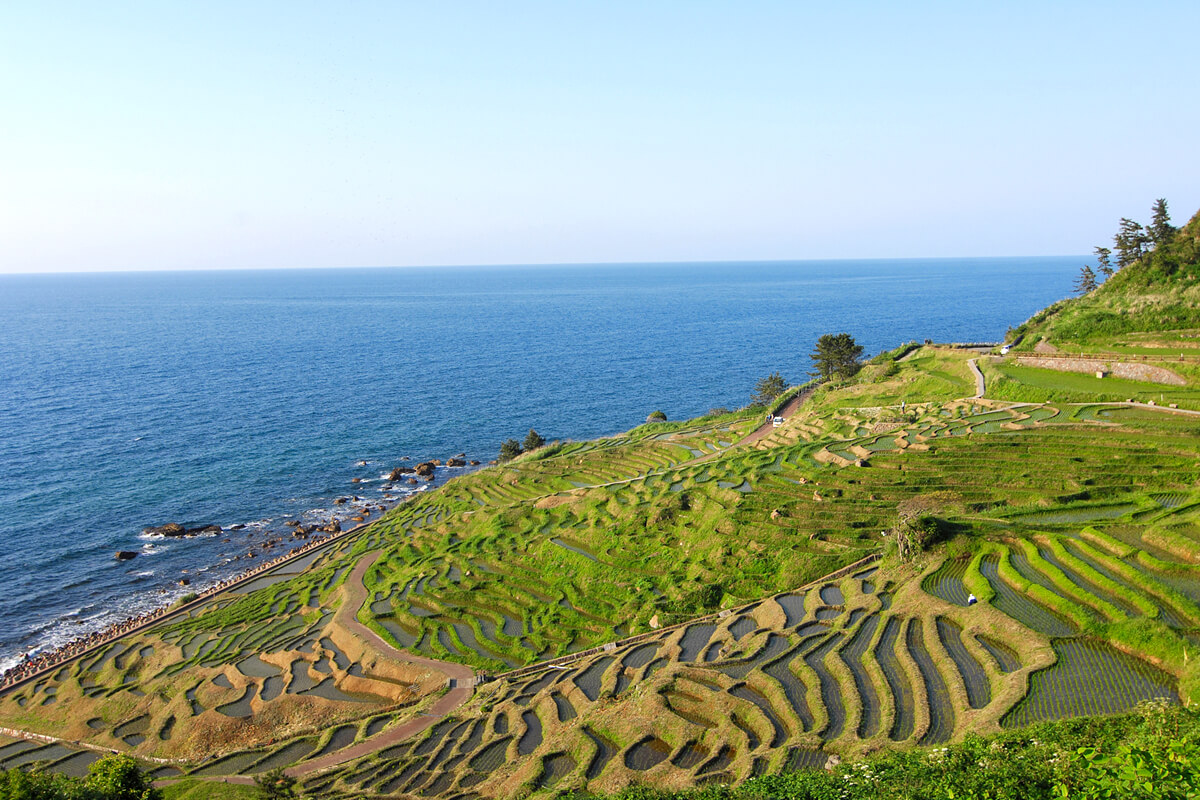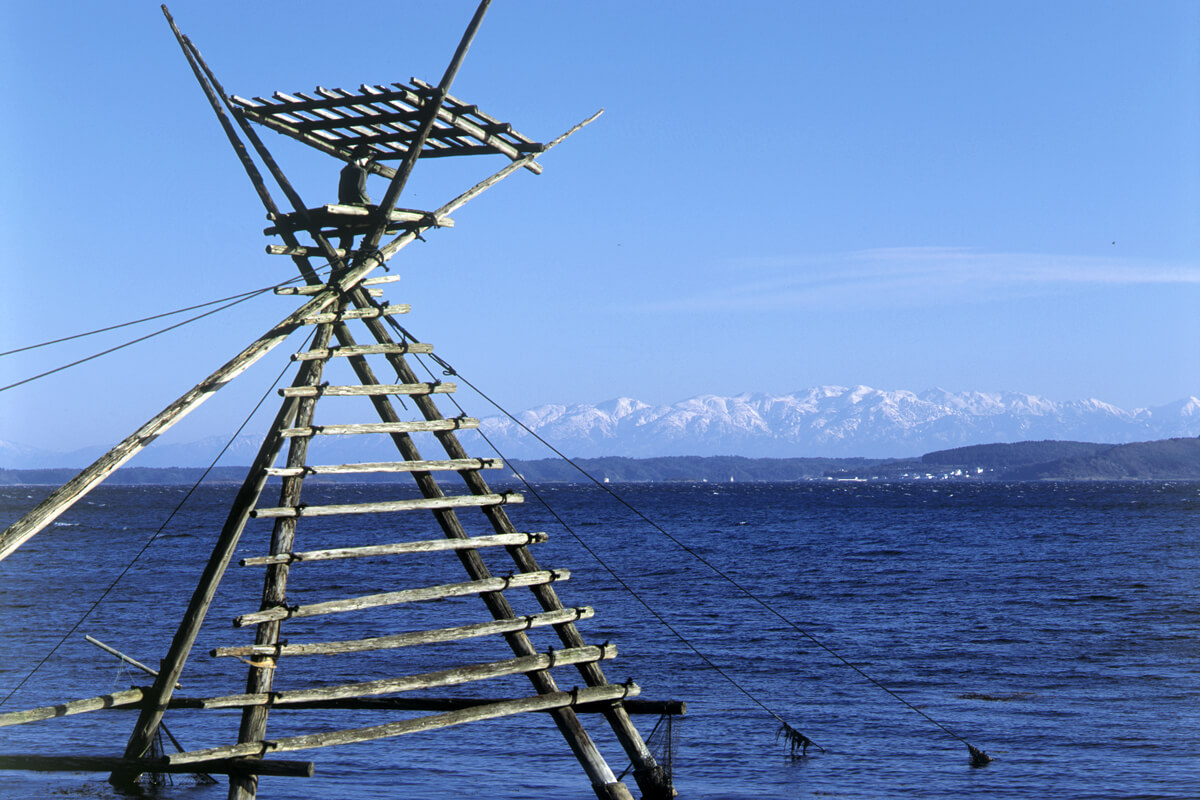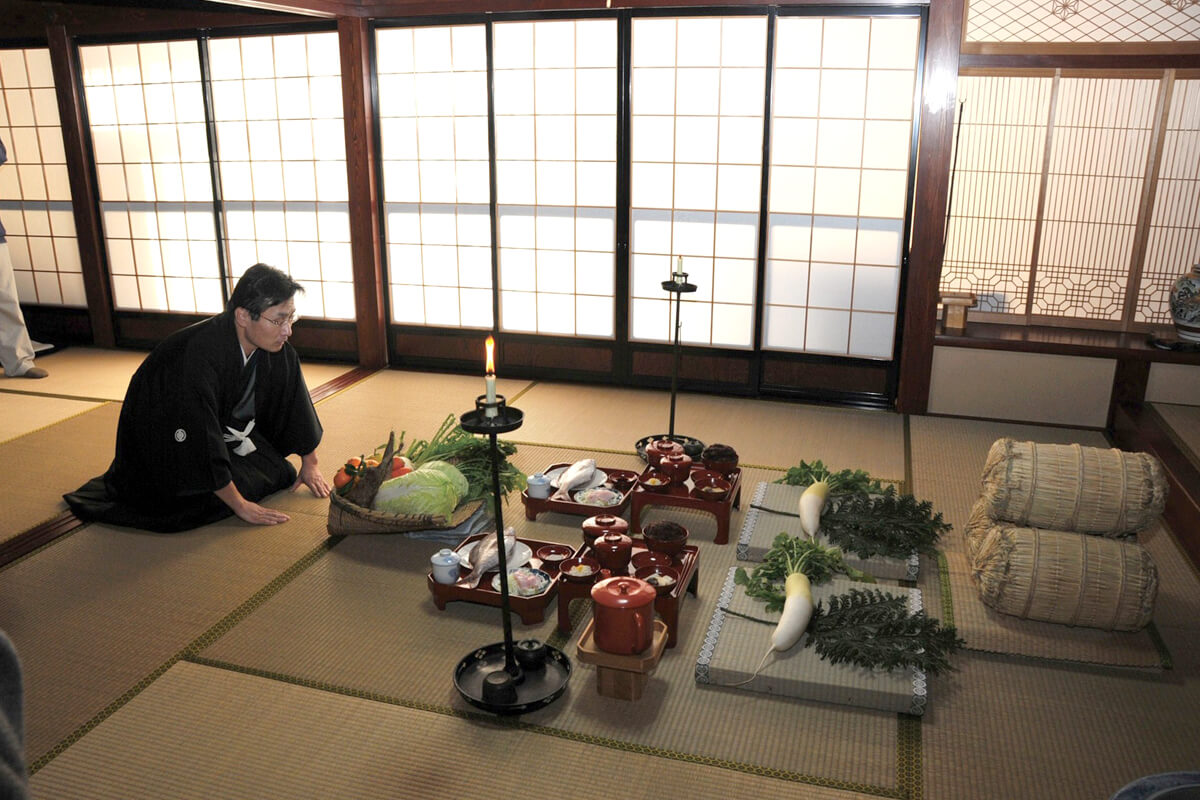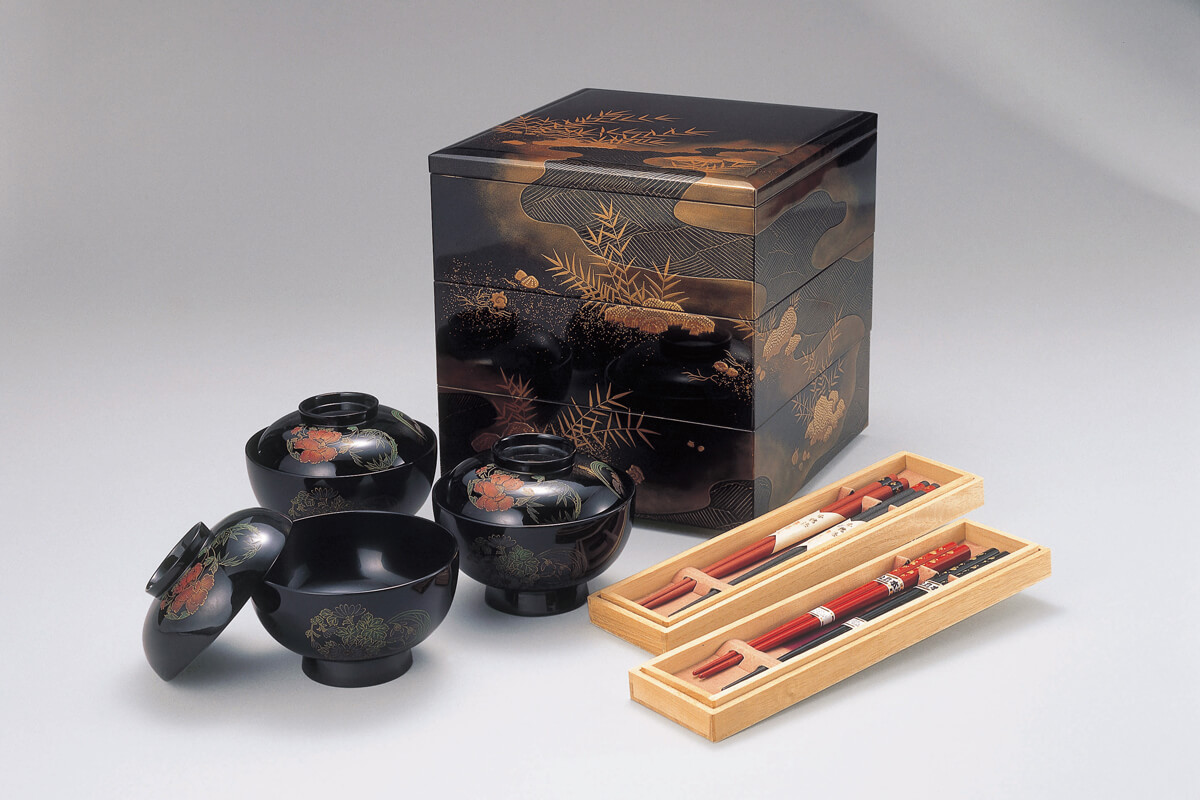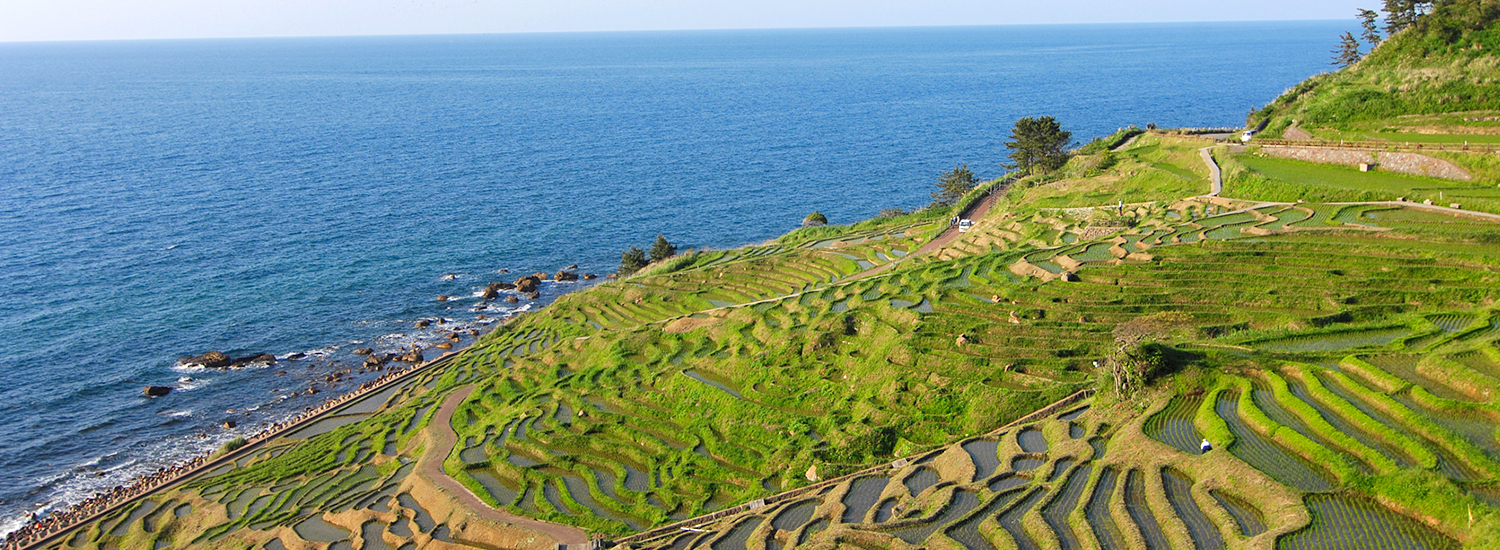About the Noto Region
- HOME
- Noto Region
Noto Region
Noto Peninsula's terrain is notable for its low mountains and hills. Because it is surrounded by sea on three sides, the shoreline is rich in diversity with shallow sandy beaches or rocky shores called Sotoura, and rias in coastal inlets with prominent ridges called Uchiura.
The climate in the area is typical of Japan Seaside; it snows in the winter but due to the offshore Tsushima Current, it is relatively warm compared to the other regions in the same latitude. This means that a variety of species thrive, and flora and fauna adapted to warm and cold weather could be seen.
Noto Peninsula is an integral region closely linked together from Satoyama to Satoumi with land use, agriculture, forestry, and fisheries industries, culinary arts, festivals, arts and crafts, and biodiversity.
In June 2011, "Noto's Satoyama and Satoumi" which expands across Noto peninsula, along with "Sado's satoyama in Harmony with the Crested Ibis" of Sado City in Nigata, was designated as GIAHS (Globally Important Agricultural Heritage Systems) by the Food and Agriculture Organization of the United Nations (FAO), the first from Japan.
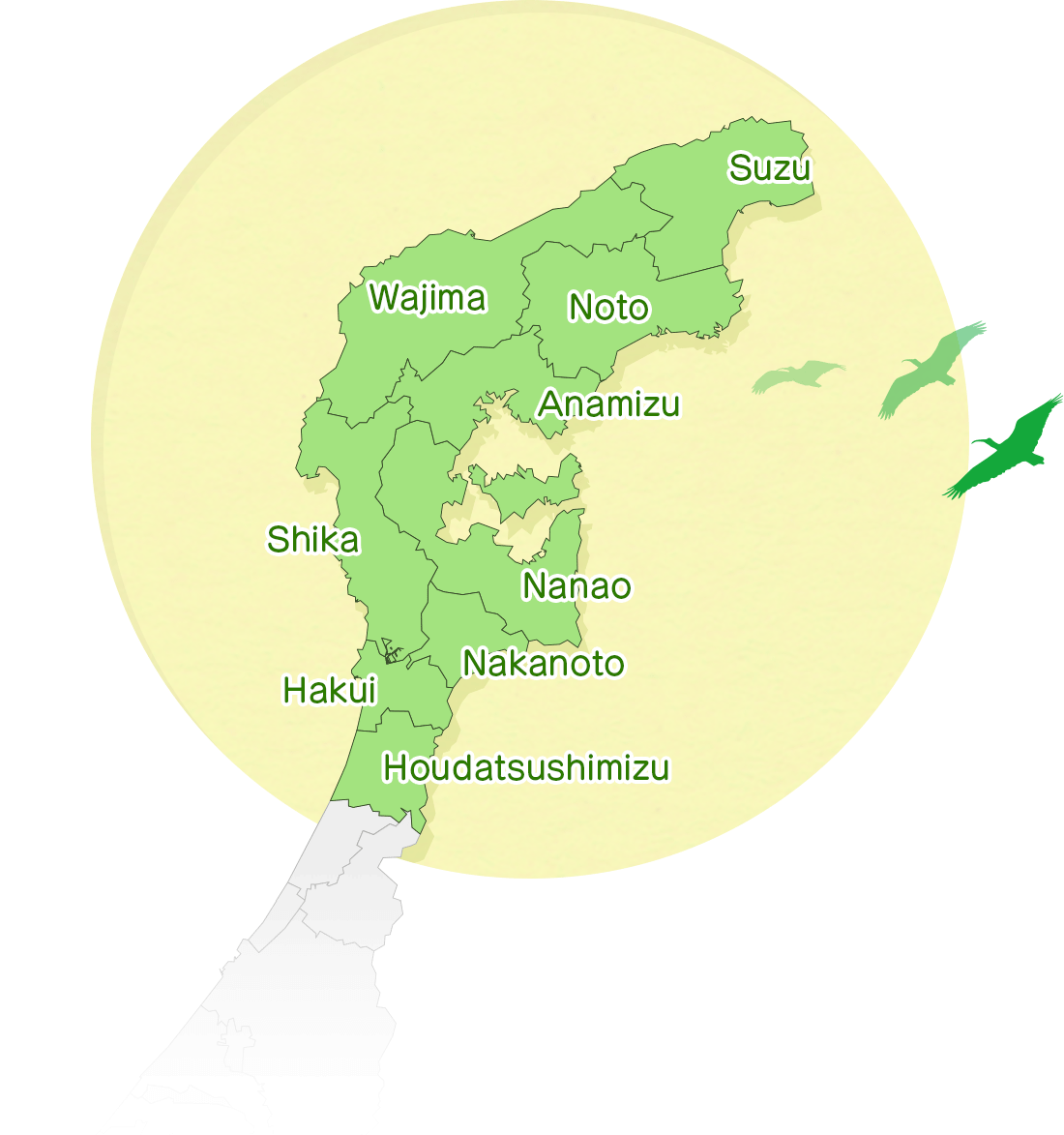
(Photo courtesy of Noto Regional GIAHS Executive Committee)



